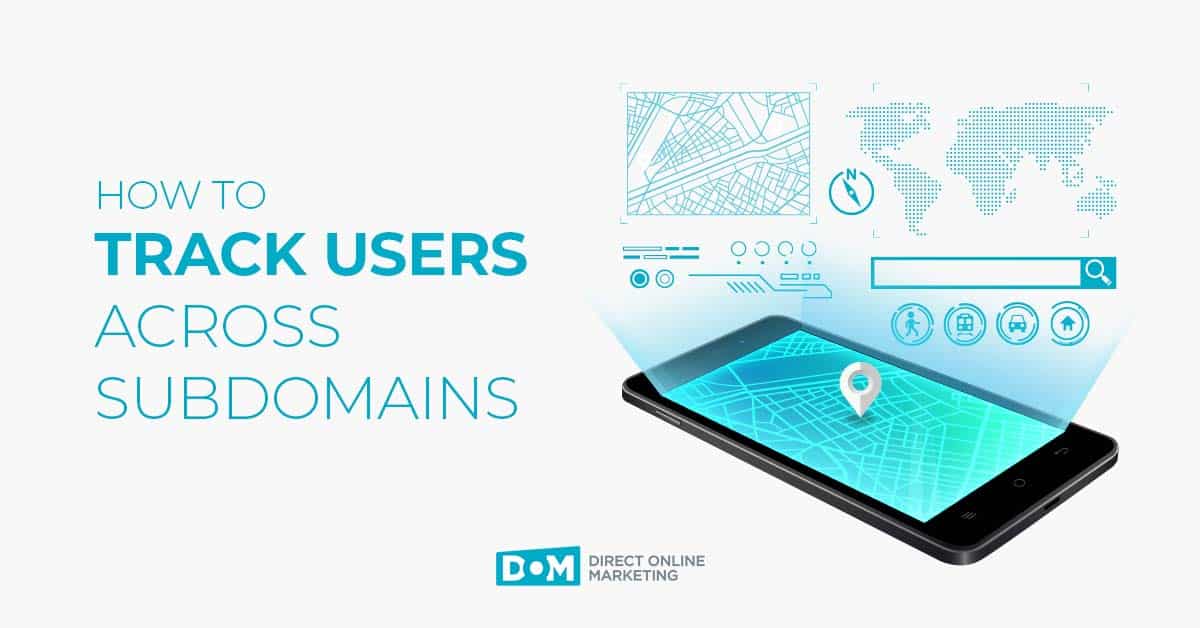
Do you have questions about Google Analytics 4, the latest version of the site measurement tool that can revolutionize the way you analyze and interpret user behavior data?
GA4 offers a unique opportunity to gain deeper insights into what drives your customers, as well as to fine-tune your marketing strategies accordingly.
Do you want to know how GA4 can help your company grow with confidence? Get your popcorn ready. We’re about to embark on an exciting journey into the world of analytics, where rich data awaits to unlock the potential of your brand.
We’ve tapped into the wisdom of our own digital marketing analysts to bring you the most frequently asked questions and answers marketers like you have about GA4.
With GA4, you can track user interactions across all their devices, gain greater insights into user journeys, and supercharge your digital marketing strategies. Get ready to discover the full scope of GA4’s powerful capabilities and how they can revolutionize your business. Let’s begin the journey towards uncovering the full potential of this powerful tool.
What are the key differences between Google Analytics 4 (GA4) and Universal Analytics?
There have been countless changes – mostly for the better- between GA4 and Universal Analytics. Here are some of the biggest, most impactful differences that users need to be made aware of.
Different Data Models
At a fundamental level, GA4 primarily uses an event-based data model, which adds great flexibility and granularity to your tracking capability. In comparison, Universal Analytics was more heavily reliant on sessions and page views and offered manual configuration of events with hard limits to event label, event category, and event action to describe the nature of the event.
Biggest Takeaway: Traffic and sessions still matter greatly in GA4! But the fundamental way that GA4 handles session is different with the introduction of the session_start event and the concept of engaged sessions. This means that comparing GA4 session data to Universal Analytics session data is an apples to orange comparison that will not match up correctly. Your traffic numbers will be off from each other by design. As a rule of thumb, it’s infinitely better to stick to one data model and observe trends that occur relative to that singular data platform rather than comparing data between different platforms that are using different data models.
Greater Customization
Universal Analytics comes out of the box with predefined reports that did a reasonably good job at a one-size fits all approach web analytics. However, the true power in GA4 is that, in the hands of an experienced analyst, it can give you powerful insights that are tailored towards your website. GA4 introduces custom definitions (parameters) that replace custom dimensions and metrics in Universal Analytics, providing more flexibility in data collection.
Biggest Takeaway: While you can focus on migrating and replicating your Universal Analytics setup in GA4, that is missing the larger overall opportunity at hand. Your analytics should mirror your business needs and priorities and with GA4, you are able to tailor your analytics setup to meet those needs. Unfortunately, GA4 is lackluster out-of-the-box and it’s not entirely intuitive within the platform about what you need to do to get the most out of it. If you want help with your GA4 analytics, then reach out today for a free strategic consultation.
BigQuery integration
GA4 offers free integration with BigQuery for advanced analysis and reporting, while Universal Analytics requires a premium (360) subscription for the same.
Biggest Takeaway: The native integration with BigQuery allows for more advanced analysis, but also should make you raise the question of who really owns your data. Google may not store your Universal Analytics historical data in perpetuity. Or if you wanted to leverage customized GA4 dashboards in Google Looker Studio or other visualization platform, you are at the mercy of the very limited GA4 API quota. Luckily, this integration offers a cost-effective alternative for storing GA4 data.
AI-powered insights
GA4 leverages machine learning to provide automated insights and predictive metrics, helping digital marketing managers make more informed decisions and builds predictive audiences that can be used within Google Ads.
Biggest Takeaway: The ability to leverage GA4 audiences into Google Ads offers quality training data based off of your website’s actual user audience behavior to optimize Google Ad campaigns. With Google ads becoming more reliant on smart automated bidding strategies, the quality training data is even more important to maximizing return on your investment.
How can digital marketing managers benefit from the improved data integration and cross-platform tracking in GA4?
For businesses that leverage mobile apps in addition to websites, the enhanced cross-platform tracking allows for a more seamless experience comparing data streams. Because Google Analytics Firebase and GA4 are both events-based models, they are leveraging similar data schema that allows for cross-platform comparison of data.
In terms of integrations, GA4 integrates well with the core Google stack via:
- Google Ads
- BigQuery
- Firebase
- Looker Studio
This means a greater ability to take advantage of GA4’s default data-driven attribution modeling, improved cross-device tracking, and great insight into user behavior on your website.
What new insights can GA4 provide for digital marketing campaigns?
Enhanced audience segmentation
GA4 enables digital marketing managers to create dynamic audience lists based on a wide range of user attributes, behaviors, and events. This enhanced segmentation can reveal new insights into how different audience segments interact with marketing campaigns, allowing for more precise targeting and personalization.
Customizable funnels
GA4 allows digital marketing managers to create customizable funnels with multiple touchpoints and conversion events, providing a deeper understanding of the user journey. By analyzing these funnels, managers can identify bottlenecks and areas of improvement, optimizing their campaigns to drive more conversions.
How does GA4’s machine learning capabilities improve data analysis and prediction for digital marketing managers?
GA4’s predictive metrics, like Purchase Probability and Churn Probability, can provide valuable insights into users’ future actions. Digital marketing managers can use this information to proactively target users who are more likely to convert or re-engage those at risk of churning, leading to more effective and efficient campaigns.
How can digital marketing managers leverage GA4’s enhanced audience segmentation features to target their campaigns more effectively?
Develop dynamic remarketing campaigns
With GA4’s advanced audience segmentation capabilities, digital marketing managers can create dynamic remarketing campaigns that are tailored to each user’s specific interactions with their website or app. For example, they can target users who have viewed a particular product category but haven’t made a purchase yet, encouraging them to complete the transaction with personalized offers or recommendations.
Optimize audience bid adjustments
GA4’s audience segmentation features can be used to identify high-value audience segments that generate the most conversions or have the highest lifetime value. Digital marketing managers can then increase bid adjustments for these segments in their Google Ads campaigns, ensuring their ads are more likely to be shown to users who are most likely to convert.
Improve content personalization
By leveraging GA4’s audience segmentation features, digital marketing managers can gain insights into the preferences and interests of their target audience. This information can be used to create personalized content and offers that cater to each segment’s needs and preferences, leading to better user experiences and higher engagement rates.
What are the best practices for setting up GA4 for optimal data collection and reporting?
The best approach we’ve found is to spend time planning what you want to see out of your analytics. This means creating a measurement strategy that mirrors your marketing goals and trying to find ways to mirror those goal KPIs and metrics in your reporting.
Additionally, GA4 has more robust platform reports, but requires detailed understanding of your setup to maximize its usage. Not everyone in your organization will feasibly want to get to this level of understanding, which means the better approach can be customized dashboards that answer “What questions do I want answered from my web data?”.
In terms of GA4 configuration best practices, here is a handy GA4 checklist that is comprehensive and easy-to-setup.
How does GA4’s event-based tracking differ from Universal Analytics, and how can digital marketing managers benefit from it?
For lead generation sites with lots of forms and gated content assets, you may be able to set up detailed event parameters such as form_name, content_type, form_id to be able to differentiate how different content and different forms are performing on your site overall. You also can analyze audience segments to see if there are patterns of behavior existing on a website. A practical use case would be being able to identify what events converting users are taking on your website versus events non-converting users as a whole are taking. Is there content that answers questions for an engaged user that leads to conversion? These are interesting insights to uncover that previously with Universal Analytics were harder to come by.
GA4’s enhanced ecommerce model and funnel reports are also significantly more robust than it was for Universal analytics. For a multi-step checkout process, you are able to clearly identify when users add items to cart, view their cart, begin checkout, and complete a purchase. This allows for greater visibility of conversion drop off points.
What are the key data visualization features in GA4 that can help digital marketing managers make more informed decisions?
While it requires intimate knowledge of your GA4 configuration, the free form or blank report allows you to set up a custom report to compare events to custom dimensions and metrics.
In terms of other report types, the funnel reporting and path exploration reports are significantly upgraded in GA4 versus Universal Analytics. That being said, they’re not intuitive to use and require a baseline knowledge of GA4 and the events tracked in your setup.
There are limitations to comparing session-scoped and event data that Google introduced in December 2022. Unfortunately, blending this type of data together would require BigQuery or another alternative.
How do GA4’s privacy and consent features help digital marketing managers comply with data protection regulations like GDPR and CCPA?
Privacy and consent features
GA4 offers better privacy controls, including consent mode and data deletion capabilities, helping marketers comply with data protection regulations like GDPR and CCPA.
I used the auto-migration tool in Universal Analytics to upgrade to Google Analytics 4. Was this a good idea?
Unfortunately, businesses have found out the hard way that the auto-migration tool was woefully insufficient at porting over users from UA to GA4. Far from an easy button, it does not migrate the setup in a way that makes sense for most businesses. In some cases, we’d recommend that you start with a net new setup because the quality of data is unusable for those using this migration tool.
What are the top GA4 integrations that digital marketing managers should consider for their marketing tech stack?
Google Ads: Link your GA4 property with your Google Ads account to analyze ad performance and optimize your campaigns.
Google Search Console: Integrate GA4 with Google Search Console to monitor organic search performance and identify optimization opportunities.
Google Data Studio: Connect GA4 with Google Data Studio to create custom data visualizations and interactive reports.
BigQuery: Integrate GA4 with BigQuery for advanced data analysis and reporting capabilities.
Firebase: Connect GA4 with Firebase to track app performance and user engagement.
Most other software platforms are leveraging the GA4 API, but are adapting to changes to provide solutions including Shopify, WordPress, Salesforce, Marketo, Hubspot, etc.
How can digital marketing managers use GA4’s conversion modeling to measure the effectiveness of their campaigns more accurately?
GA4 Conversion modeling refers to how GA4 estimates some conversions that it doesn’t observe directly based on the modeling of data. This doesn’t mean that the data is less trustworthy necessarily, but it is a clear difference versus Universal Analytics. There are a couple of main implications that a digital marketing manager should be aware of, which are that recent conversion data may be subject to change. The modeling may result in shifting of recent conversion data, so understand that numbers may change slightly over time. The other major implication is that Google Analytics is best used when thinking about patterns and trended data versus stressing over exact numbers. As it is, with Apple’s Intelligent tracking protection and increasing changes to data privacy, there is less guarantee of completely accurate data, but overall trends and sample sizes should still inform strategic decision-making.
What are the recommended GA4 training resources for digital marketing managers to get up to speed quickly?
Of course the DOM blog is a great resource! But beyond that:
- Analyticsmania.com
- Measureschool.com
- Simoahova.com
How can GA4’s enhanced ecommerce tracking features help digital marketing managers optimize their online store performance?
GA4 provides very clear pathways for evaluating checkout funnels and overall product performance. Understanding how different traffic channels are performing in terms of conversion events is critical and should help inform how conversion optimization efforts are taken on site. GA4 is not the answer to why problems happen – behavioral analytics tools such as heat-mapping or A/B testing help better with this – but GA4 can help pinpoint where conversion drop off points are happening as well as provide clues for what problems may exist.
What are the top GA4 custom reports and dashboards that digital marketing managers should create for better campaign monitoring?
The most powerful visualizations would be connecting GA4 to other visualization platforms such as Google Looker Studio, Tableau, or other visualization alternative. Ideally, to avoid the GA4 quota issue, these SEO, PPC, and general marketing dashboards are generated with integration from BigQuery or other data warehouse/database system.
How can GA4’s predictive metrics help digital marketing managers optimize their budget allocation and campaign targeting?
GA4 predictive audiences are the most likely application where it uses machine learning to predict custom audiences such as those likely to convert or those likely to churn. Keep in mind, your website needs enough of a data set to be able to have these insights generated.
I am not getting the same kind of insights I want out of my GA4. How do I fix this?
- Generate a measurement strategy that identifies the business goals, marketing goals, KPIs, and metrics that are important for a business.
- Install GA4 through GTM. The biggest challenge is likely in this step, as there are a lot of custom CMS websites that don’t have a proper data layer setup to capture the right data in GTM.
- Integrate GA4 with the Google stack.
- Generate a custom dashboard that answers the most important questions you want answered out of your data.
DOM offers GA4 analytics setup and training if you need help with the above.
How can digital marketing managers use GA4’s advanced analysis techniques to gain deeper insights into user behavior and campaign performance?
Integrating GA4 and Google Ads data with BigQuery unleashes the ability to blend data and evaluate performance through deeper data analysis. Within platform, there are powerful insights, but to be able to manipulate and blend data together that is only possible with external solutions will further untap its potential.
What is the future of GA4, and how can digital marketing managers stay updated on the latest developments and features?
GA4 is continually evolving and is most powerful when digital marketing managers spend the time to understand its nuances. Hopefully, GA4 will become more feature rich and adjustments to the UI happen to lower the learning curve for brand new users.
GA4 is meant to be integrated with Google Tag Manager and it would be very difficult and time-consuming to be maintained through hard-coded gtag.
The data landscape will also likely be changing with the popularity and dynamic changes resulting from AI and data privacy laws. It is up to digital marketing managers to stay current as things are rapidly developing.
You Made It To The End?
If you’ve made it to the bottom of this post, you just uncovered some crucial insights into optimizing your analytics strategies with GA4.
With answers to 20 vital questions, you’ve gained the foundation to build a solid data-driven approach for your brand.
Have a question you didn’t see answered above? Contact us and let us know – we’re always eager to help you grow online with confidence.
Thank you for diving in with us, and let us know if we can support you with our top-rated marketing analytics services as you complete your GA4 migration journey.


